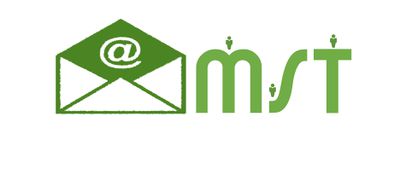Difference between revisions of "ANLY482 AY2016-17 T1 Group6/Project Overview"
| Line 75: | Line 75: | ||
#* Identifying which client sectors a particular salesperson tends to interact with e.g. Healthcare, Education, Government | #* Identifying which client sectors a particular salesperson tends to interact with e.g. Healthcare, Education, Government | ||
#* Measuring dependency of the firm’s business on a particular salesperson/a team of salespeople | #* Measuring dependency of the firm’s business on a particular salesperson/a team of salespeople | ||
| − | |||
| − | |||
| − | |||
| − | |||
| − | |||
| − | |||
| − | |||
| − | |||
| − | |||
<div style="border-style: solid; border-width:0; background: #3CB371; padding: 7px; font-weight: bold; text-align:left; line-height: wrap_content; text-indent: 20px; font-size:20px; font-family:Century Gothic;border-bottom:5px solid white; border-top:5px solid black"><font color= #ffffff>Data</font></div> | <div style="border-style: solid; border-width:0; background: #3CB371; padding: 7px; font-weight: bold; text-align:left; line-height: wrap_content; text-indent: 20px; font-size:20px; font-family:Century Gothic;border-bottom:5px solid white; border-top:5px solid black"><font color= #ffffff>Data</font></div> | ||
Revision as of 15:55, 30 August 2016
| Home | Team | Project Overview | Final Progress | Project Management | Documentation |
While much has been explored in the field of Sales Analytics, a quick search reveals that few companies have delved into the area of Sales People Analytics. Deloitte found that almost 70% of companies felt they were weak in using HR data to predict workforce performance and improvement3.
Conventional wisdom tells us there are several ways to evaluate a salesperson’s performance, such as the size of his external network and his sales figures. New research say this is an oversimplification of sales practices. Steward et al. (2010) found that higher-performing salespeople regularly activated their internal company networks to coordinate a team of experts tailored to serve a particular customer4. Purely focusing on sales figures as an indicator of performance also neglects the time aspect. Sometimes long-term projects take months to realize revenues. Harvard Business Review also found that spending time with both internal and external connections contributed to success in selling5.
We aim to assist TrustSphere in developing a dashboard for Sales Managers to monitor salespeople effectiveness.
TrustSphere has a sales team spread across APAC, US and the UK. This has made it hard for the Sales Director to track salespeople activity, especially in a fast-growing company.
Additionally, while a salesperson may be physically located in one particular office, TrustSphere’s salespeople tend to engage in business with clients internationally. A salesperson in Singapore might try to expand his sales into the UK, even though there are already local salespeople there. This also raises some questions about productivity. For instance, are two salespeople from different offices unnecessarily pursuing the same clients?
As a Relationship Analytics company, TrustSphere is also naturally curious about the networks its salespeople are involved in and their effects on sales performance. TrustSphere has pointed out that its salespeople have a tendency to work in silos instead of sharing information. Such behaviour is beneficial to the salesperson who gets to keep his leads to himself and enjoy greater earnings. However, this might negatively affect the company’s overall performance.
We aim to analyze the sales team’s internal and external networks to gain insight into their communication strategy, to identify silos and any other red flags which may lead to adverse consequences for the company. We seek to develop metrics that would indicate sales health performance in terms of relationships.
On the whole, we seek to address these problems and present our insights by building a dashboard which allows the Sales Director an eagle eye’s view of the entire sales team’s performance and activity.
The research points we would like to address include:
- Uncovering Insights into Network and Sales performance
- Develop a measure to evaluate the quality of internal and external relationships formed, possibly using recency, frequency, TrustScore etc.
- Discover opportunities through text analysis on salespeople’s email headers and placing them into an appropriate sales cycle. E.g. For Salesperson A, 50% of emails about closing, 20% about meetings
- Analysing the Sales Team’s Internal Network
- Analysing salespeople interactions with various other departments e.g. marketing
- Deriving a collaboration score to observe how salespeople activate their internal connections to serve an account.
- Deriving a salesperson’s influencer score within the organization using eigenvector centrality. This will include factors such as Hierarchy, Number of Ties, Strength of Ties to other influential people within the organization
- Tracking a salesperson’s network trajectory i.e. how a salesperson’s internal network changes over time
- Analysing the Sales Team’s External Network
- Tracking the sent and response rate of emails
- Identifying which client sectors a particular salesperson tends to interact with e.g. Healthcare, Education, Government
- Measuring dependency of the firm’s business on a particular salesperson/a team of salespeople
- Daily email communication data
This dataset contains daily email communication data (from May 2016 to present) and 6 variables deemed relevant in our visualization. A total of 70,000 entries are provided.
- Date: Includes the date and time of a particular email being sent
- Originator address: Sender email address
- Recipient address: Receiver email address
- Direction: Nature of communication (internal, inbound or outbound)
- MsgID: Unique message ID of emails sent
- Email Subject: Email subject header
- Unique email relationship metrics of each sales employee
- TrustSphere Staff List
3 http://dupress.com/articles/people-and-hr-analytics-human-capital-trends-2015/
4 Steward, M. D., Walker, B. A., Hutt, M. D., & Kumar, A. (2010). The coordination strategies of high-performing salespeople: Internal working relationships that drive success. Academy of Marketing Science.Journal, 38(5), 550-566. doi:http://dx.doi.org/10.1007/s11747-009-0170-0
5 https://hbr.org/2014/08/3-behaviors-that-drive-successful-salespeople
